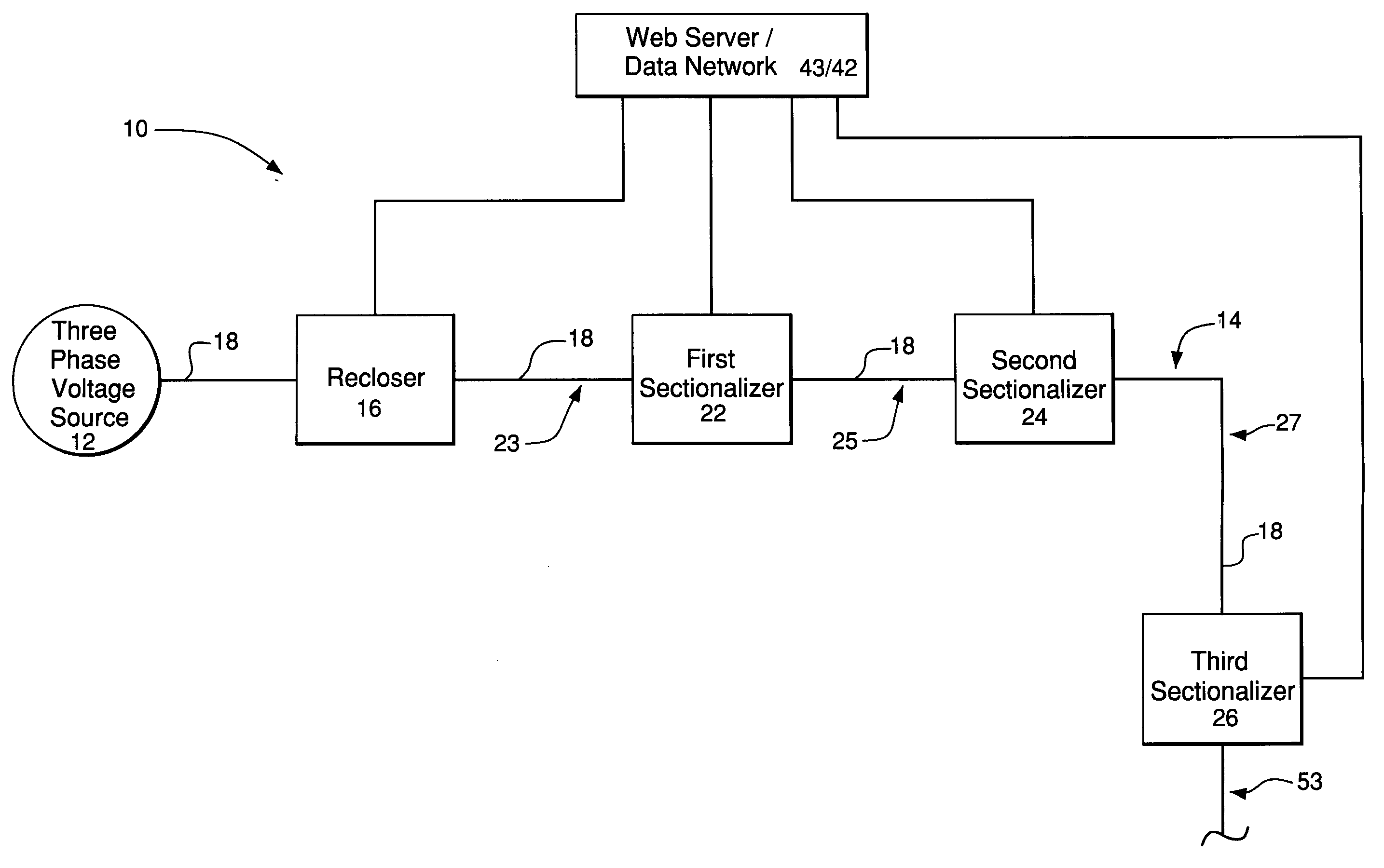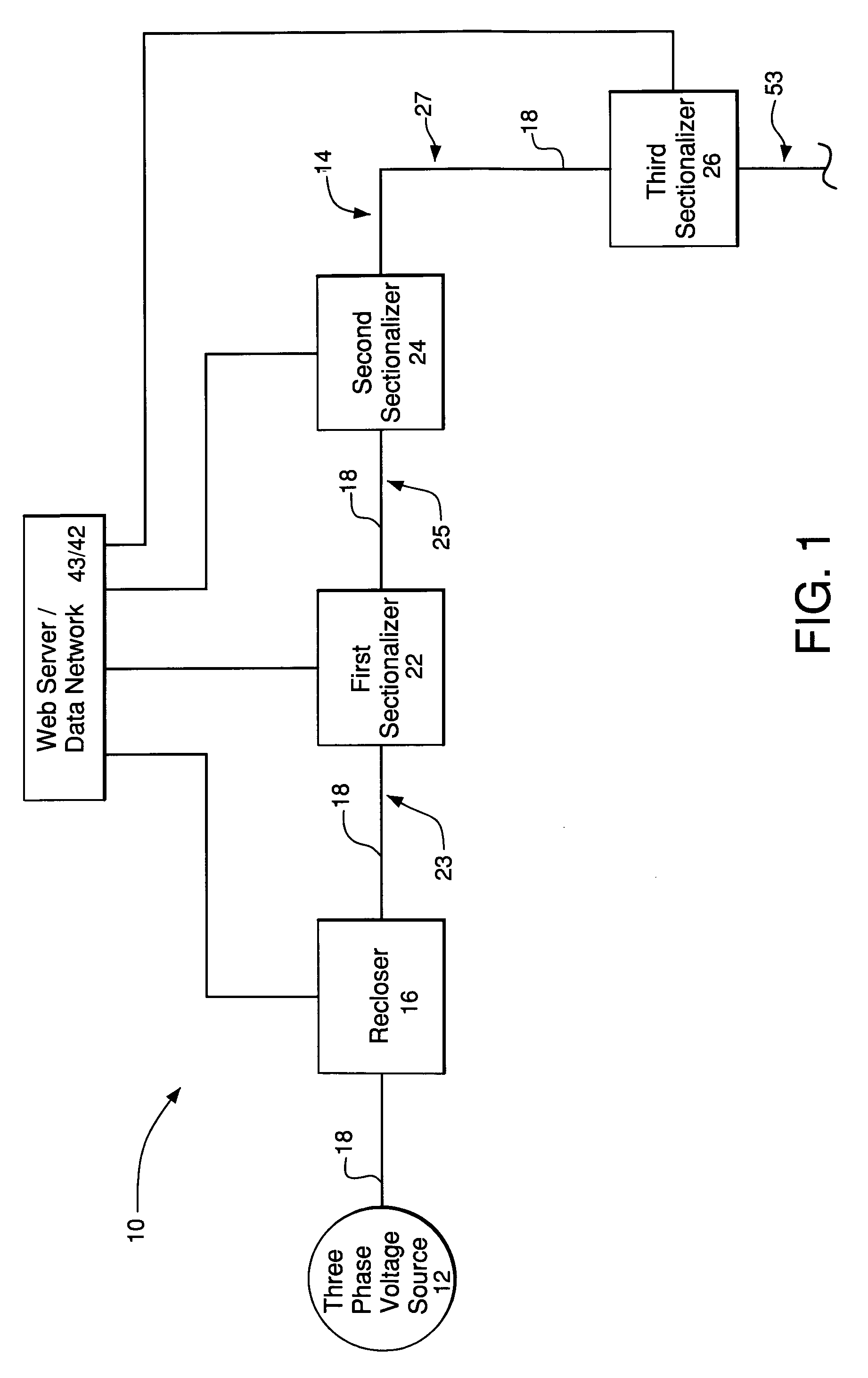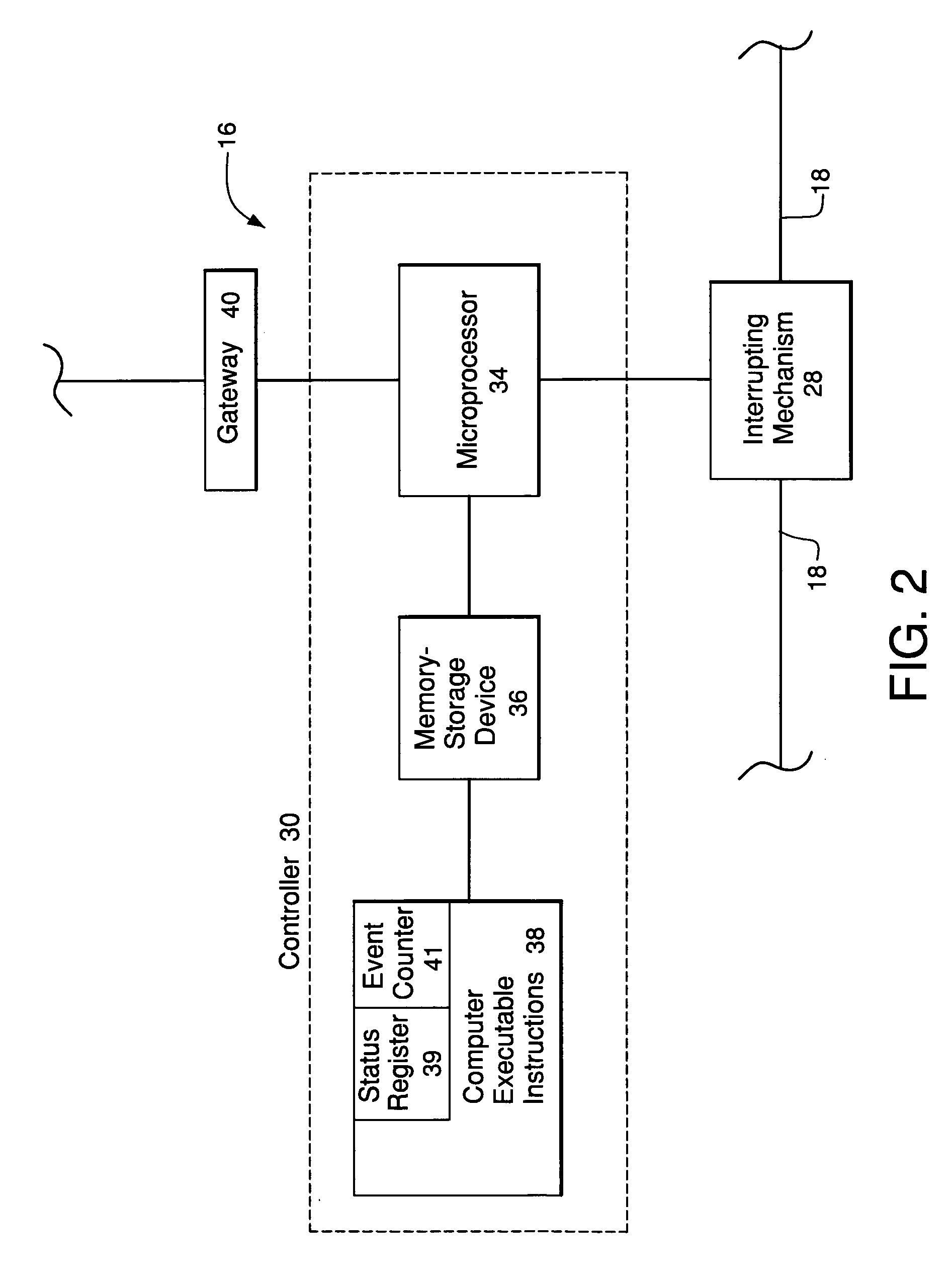Adaptive protection system for a power-distribution network
a protection system and power distribution technology, applied in emergency protection circuit arrangements, circuit arrangements, electrical equipment, etc., can solve the problems of reducing the potential for a single-point fault to leave large numbers of users without electrical power, reopening to once again trip, and consuming tim
- Summary
- Abstract
- Description
- Claims
- Application Information
AI Technical Summary
Benefits of technology
Problems solved by technology
Method used
Image
Examples
Embodiment Construction
[0027]FIGS. 1–3 depict a power-distribution network 10 comprising a preferred embodiment of an adaptive protection system 15. The adaptive protection system 15 is adapted to detect the presence and location of faults within an above-ground, radial distribution feeder 14 of the power-distribution network 10. Moreover, the adaptive protection system 15 is adapted to reconfigure itself to isolate the section of the distribution feeder 14 in which the fault is present, as described in detail below.
[0028]The power-distribution network 10 comprises a three-phase voltage source 12 and the distribution feeder 14 (see FIG. 1). The adaptive protection system 15 comprises a recloser 16, a first sectionalizer 22, a second sectionalizer 24, and a third sectionalizer 26.
[0029]The adaptive protection system 15 forms a part of the distribution feeder 14. More particularly, the distribution feeder 14 comprises the recloser 16, the first, second, and third sectionalizers 22, 24, 26, and a cable 18.
[0...
PUM
 Login to View More
Login to View More Abstract
Description
Claims
Application Information
 Login to View More
Login to View More - R&D
- Intellectual Property
- Life Sciences
- Materials
- Tech Scout
- Unparalleled Data Quality
- Higher Quality Content
- 60% Fewer Hallucinations
Browse by: Latest US Patents, China's latest patents, Technical Efficacy Thesaurus, Application Domain, Technology Topic, Popular Technical Reports.
© 2025 PatSnap. All rights reserved.Legal|Privacy policy|Modern Slavery Act Transparency Statement|Sitemap|About US| Contact US: help@patsnap.com



